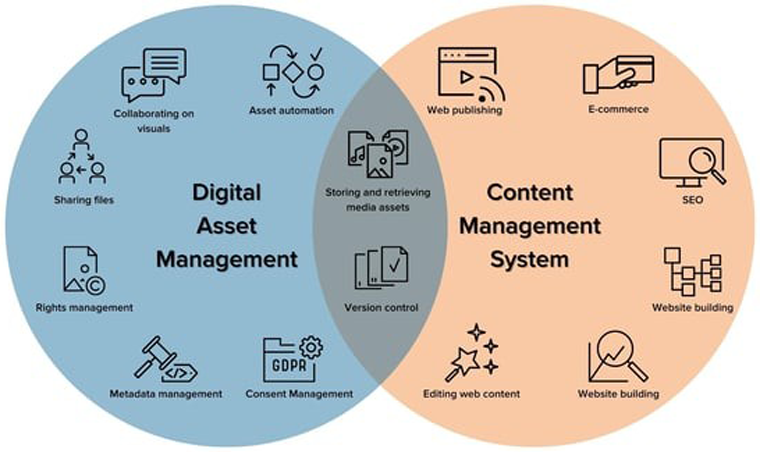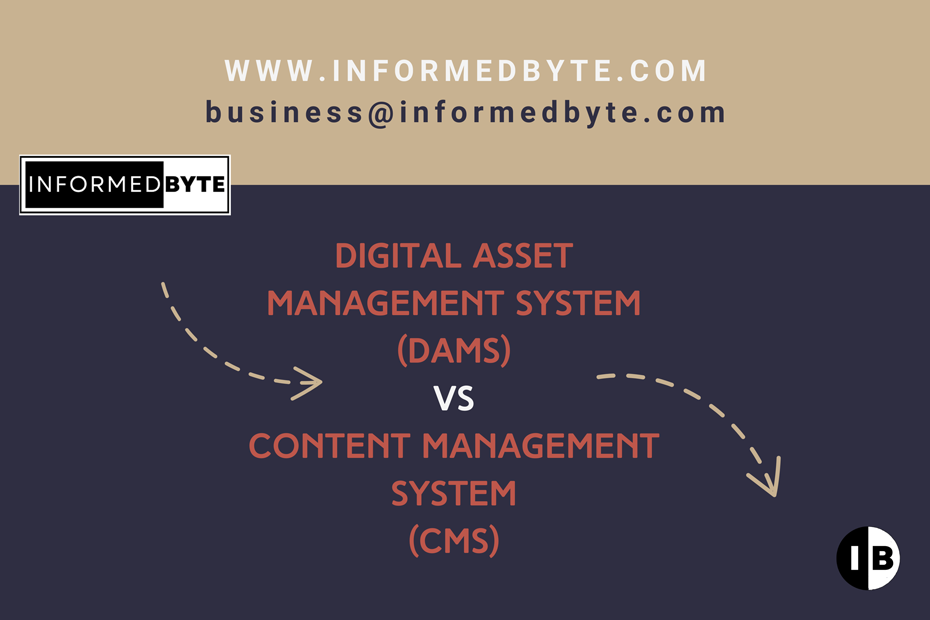DAMS vs CMS: Do you need one or both?
June 3, 2025
In today's digital-first business environment, managing and distributing content effectively is critical to operational efficiency, brand consistency, and customer engagement. Two key technologies at the heart of this content infrastructure are Digital Asset Management Systems (DAMS) and Content Management Systems (CMS). While each serves a distinct purpose, together they can form a powerful ecosystem for managing digital content and media.
DAMS enable the systematic organisation, storage, and retrieval of digital assets such as images, videos, and documents, streamlining content workflows, enhancing collaboration, and maintaining brand consistency. Meanwhile, CMS platforms provide a framework for creating, publishing, and managing web content, making it accessible and easy to update. By integrating DAM and CMS, organisations can seamlessly marry their rich media assets with web content, ensuring a consistent and engaging digital presence. This synergy not only improves operational efficiency but also enhances user experience, boosting overall brand effectiveness and digital marketing strategies.

Diagram courtesy of FotoWare
What is a DAMS?
A Digital Asset Management System (DAMS) is a centralised platform designed to organise, store, retrieve, share, and publish digital assets such as images, videos, graphics, audio files, and documents. DAM systems are particularly valuable for managing high volumes of visual media, ensuring that all assets are easily accessible and consistently aligned with brand standards.
Key features of a DAMS typically include:
Centralised storage of rich media assets
Advanced metadata tagging and categorisation
Version control and audit trails
Rights management and license tracking
Automated workflows for approval and distribution
By structuring assets with detailed metadata and permissions, DAMS significantly streamline workflows across creative, marketing, and communication teams—enabling quicker access to the right assets and reducing duplication or misuse of media.
What is a CMS?
A Content Management System (CMS) is a software application used to create, manage, and publish digital content—primarily for websites and online platforms. It provides a user-friendly interface that enables non-technical users to build and maintain websites, without needing in-depth programming knowledge.
Typical CMS capabilities include:
Content creation and publishing tools
Template-based design and layout management
User access controls and versioning
Multilingual and multi-site management support
A CMS empowers editorial and marketing teams to manage website content efficiently, ensuring that information is up to date, engaging, and aligned with user expectations.
How a DAMS differs from a CMS
While both systems deal with digital content, their core functions and strengths differ:
| Feature | DAMS | CMS |
| Primary Function | Manages digital assets | Manages and publishes website content |
| Content Types | Media files (images, video, audio, documents) | Web pages, blog posts, text-based content |
| Use Case | Storing, organising, and distributing assets | Creating, editing, and publishing content |
| Target Users | Creative, brand, and marketing teams | Content editors, marketers, and web admins |
| Workflow Focus | Media creation, review, and approval | Editorial publishing and web updates |
Do You Need a DAMS, a CMS, or Both?
The answer depends on your organisation's structure, content volume, and digital strategy. Here's a breakdown:
You may only need a CMS if:
Your focus is on publishing web content, such as blogs, product pages, and marketing copy.
Your digital asset requirements are minimal or can be managed within the CMS environment.
Your team is primarily involved in web management, with little need for asset versioning or workflow approvals.
You may only need a DAMS if:
You manage a large volume of media assets across multiple campaigns or platforms.
Your teams require strict control over asset usage, brand guidelines, or licensing.
You don't currently maintain a complex website or use dynamic digital publishing.
You likely need both if:
You produce and publish content-rich websites that rely heavily on images, videos, and other media.
Your creative and content teams need to collaborate seamlessly while maintaining brand integrity.
You are looking to scale content operations across multiple channels (e.g. websites, social media, advertising platforms) without compromising efficiency or quality.
Why Integration Matters
Integrating DAMS and CMS platforms can unlock substantial operational benefits. When seamlessly connected:
Editors can pull approved assets from the DAM directly into the CMS environment.
Creative teams maintain control over brand consistency and asset updates.
Workflows between content creation and publication are significantly accelerated.
This synergy ensures that media assets and web content are tightly aligned, creating a cohesive user experience across all digital touchpoints.
Final Thought: Choose the Right Tools for the Job
When deciding between a DAMS and CMS—or both—it's crucial to understand the unique needs of your organisation. Avoid using one system to fulfil the role of the other, as this often leads to inefficiencies, poor user experience, and compromised results. Instead, invest in the right technology for each function, and focus on building a well-integrated content ecosystem that supports long-term growth, brand consistency, and digital success.
Let's review your needs
